Safari Camera Traps
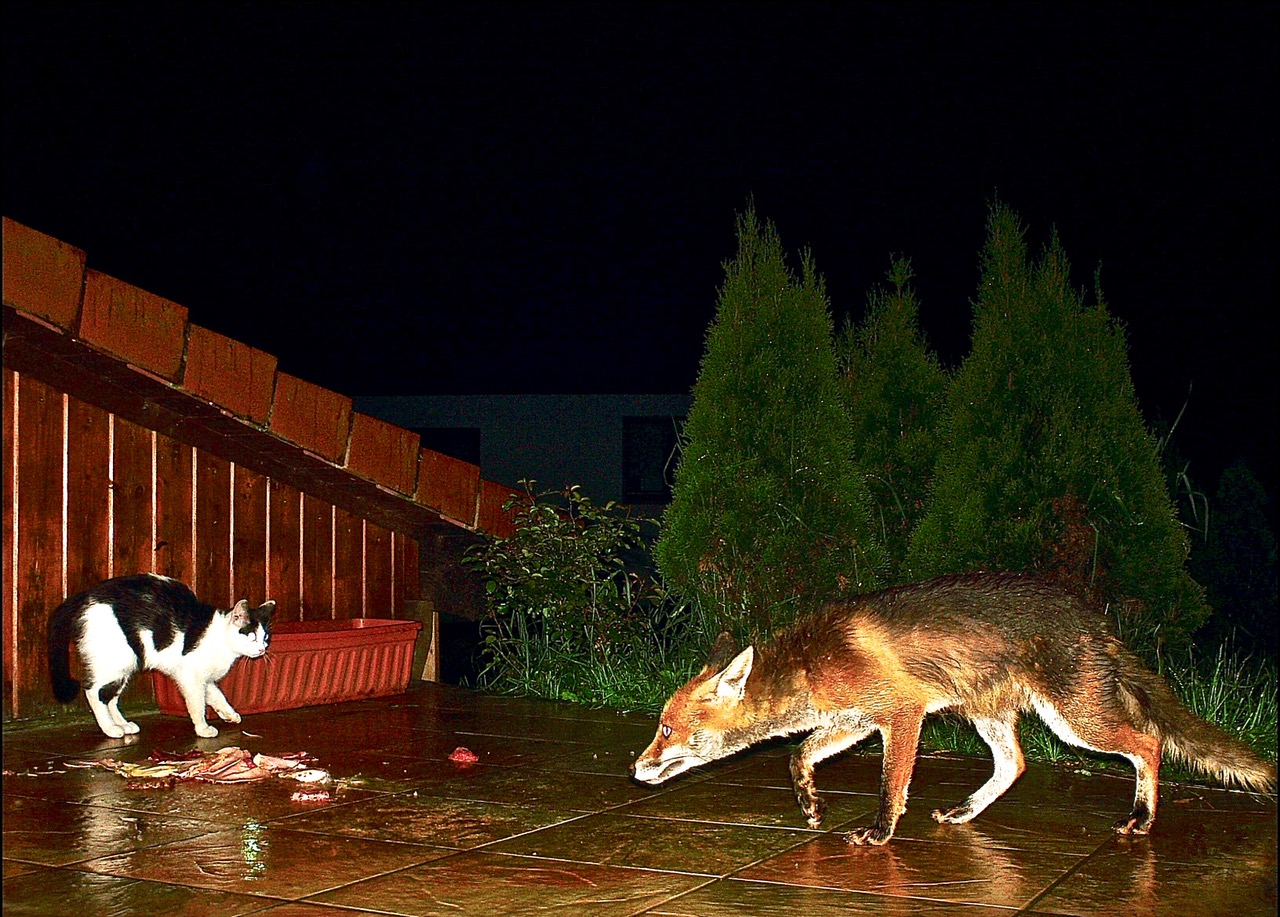 Cat and fox
Cat and foxI received the following email from Klaus Schindler about his recent visit to the Kgalagadi Transfrontier Park…
We just returned from a visit to Kgalagadi where we stayed at Kalahari Tented Camp and Mata Mata and it was fantastic as always. Years ago, at KTC (Kalahari Tented Camp) we got quite a fright. We were staying in one of the big family tents and the lock of the door was damaged, so we just pushed a suitcase against it.
One morning around 1 am we woke up and could hear heavy steps right in front of the door! The animal came from the left and walked to the end of the balcony, where it paused for a minute then slowly walked back to the left from where it came.
My wife had got hold of my hand, with the other I grabbed a pepper spray. I said to my wife “tomorrow we’ll see what it was”, but no luck as heavy rain fell that morning and of course all spoors and tracks were gone after the rain.
It was either a lion or a
hyena, but I think more a lion as the steps were heavy. Once back in Hermanus I
immediately ordered a night camera, and now, whenever I go to Kgalagadi, Kruger
and other parks, I mount the safari camera trap close to the entrance of the
chalets or tents.
Klaus sent us some very interesting photographs that he has since captured…!
Safari Camera Trap in KTC
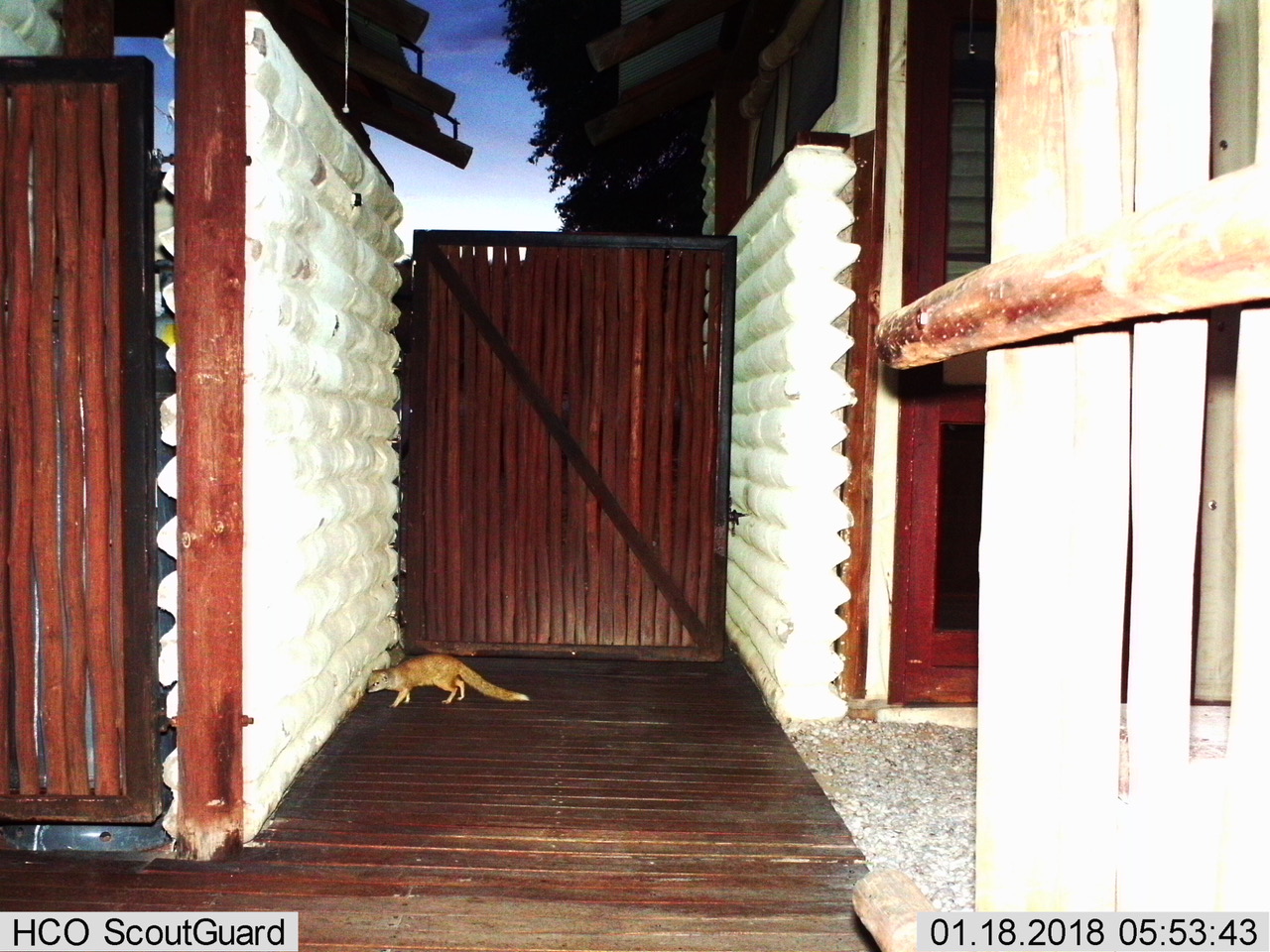 Yellow mongoose
Yellow mongoose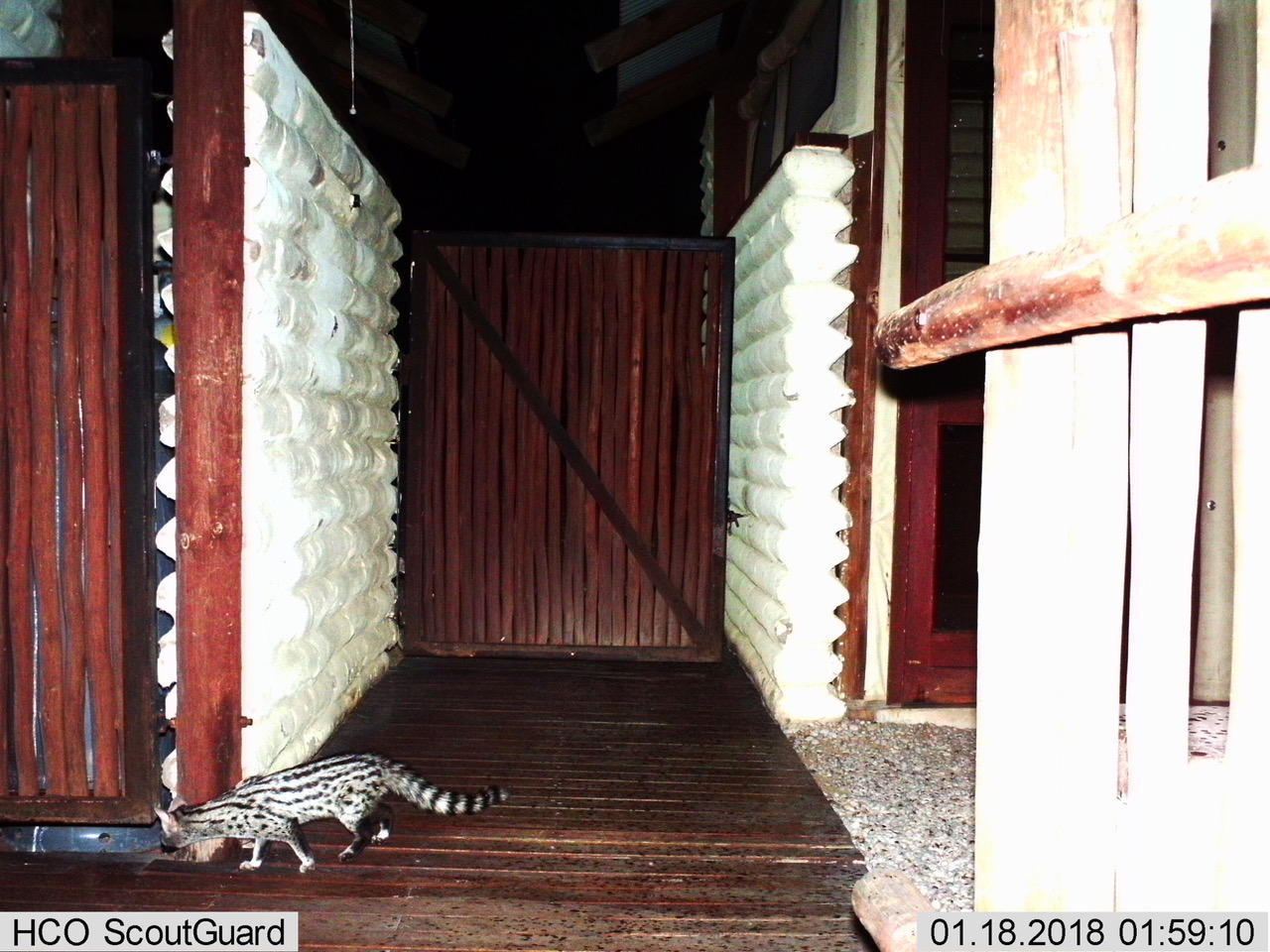 Genet
GenetSafari Camera Trap in Satara Camp
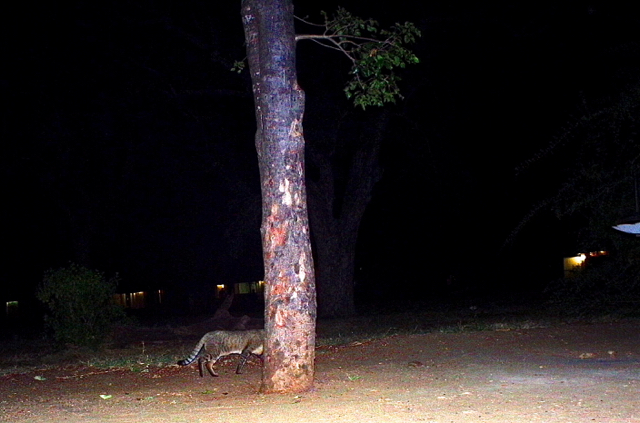 African Wild Cat - why did he have to walk behind the tree!
African Wild Cat - why did he have to walk behind the tree!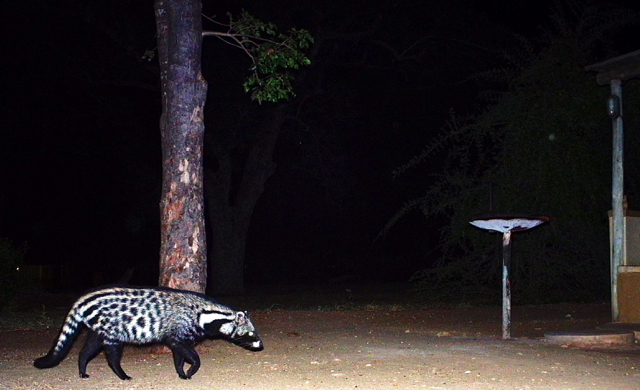 Civet
Civet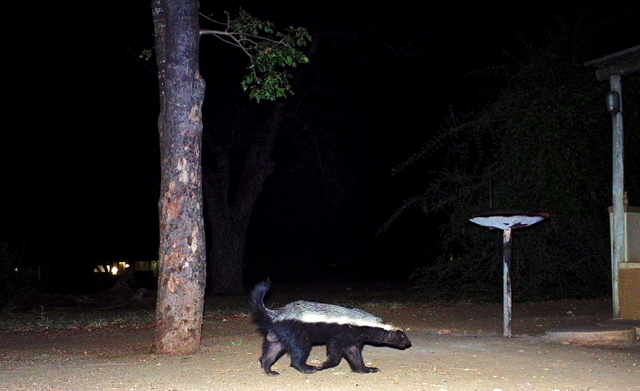 Honey badger
Honey badgerThis got me interested in safari camera traps or trails cameras as they are also known.
There are basically two sensors commercially available for safari camera traps:
Active infrared (AIR) - creates a narrow infrared beam between two units and triggers the camera when a subject breaks the beam. The advantage of AIR sensors is that they can accurately control where an animal will trigger the camera thereby providing you with more control over composition.
Passive infrared (PIR) – is a one-piece unit that detects changes in heat across a wide area. The advantage of a PIR sensor is that it’s easier to set up, doesn’t require the subject to be in a specific spot and tends to be cheaper.
Klaus has the PIR sensor with flash and it captures colour images. Some camera traps shoot only black & white images and they don’t have a flash.
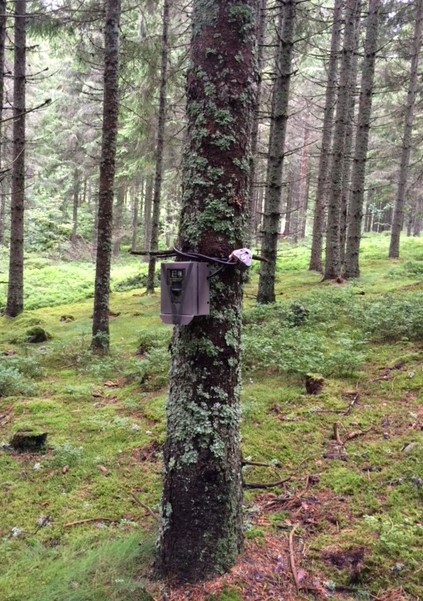 Camera trap in position in Germany
Camera trap in position in GermanyMore Camera Trap Images
Klaus captured these incredible photos of the interaction between foxes, cats and other subjects in Germany…
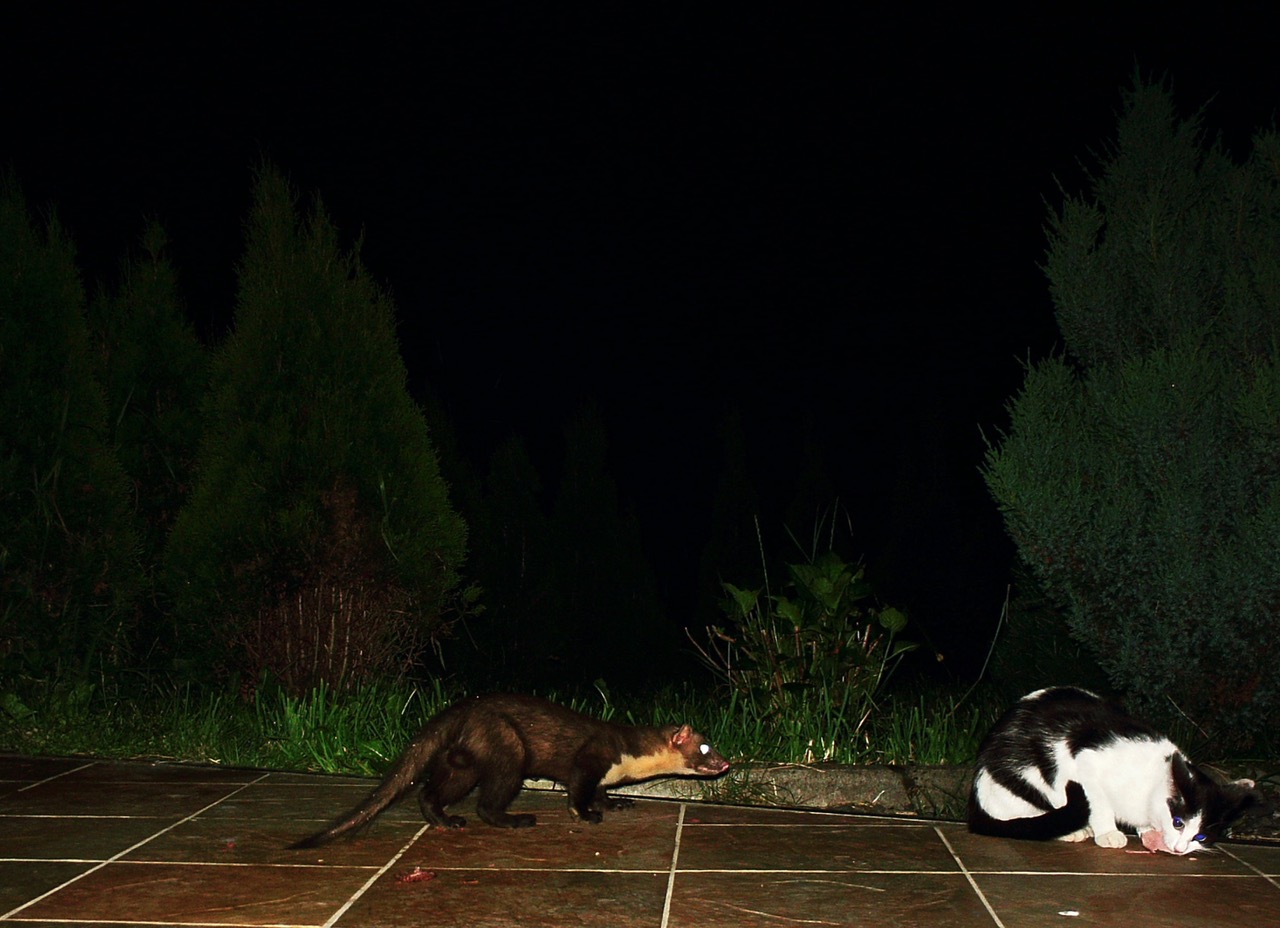 Marten and cat
Marten and cat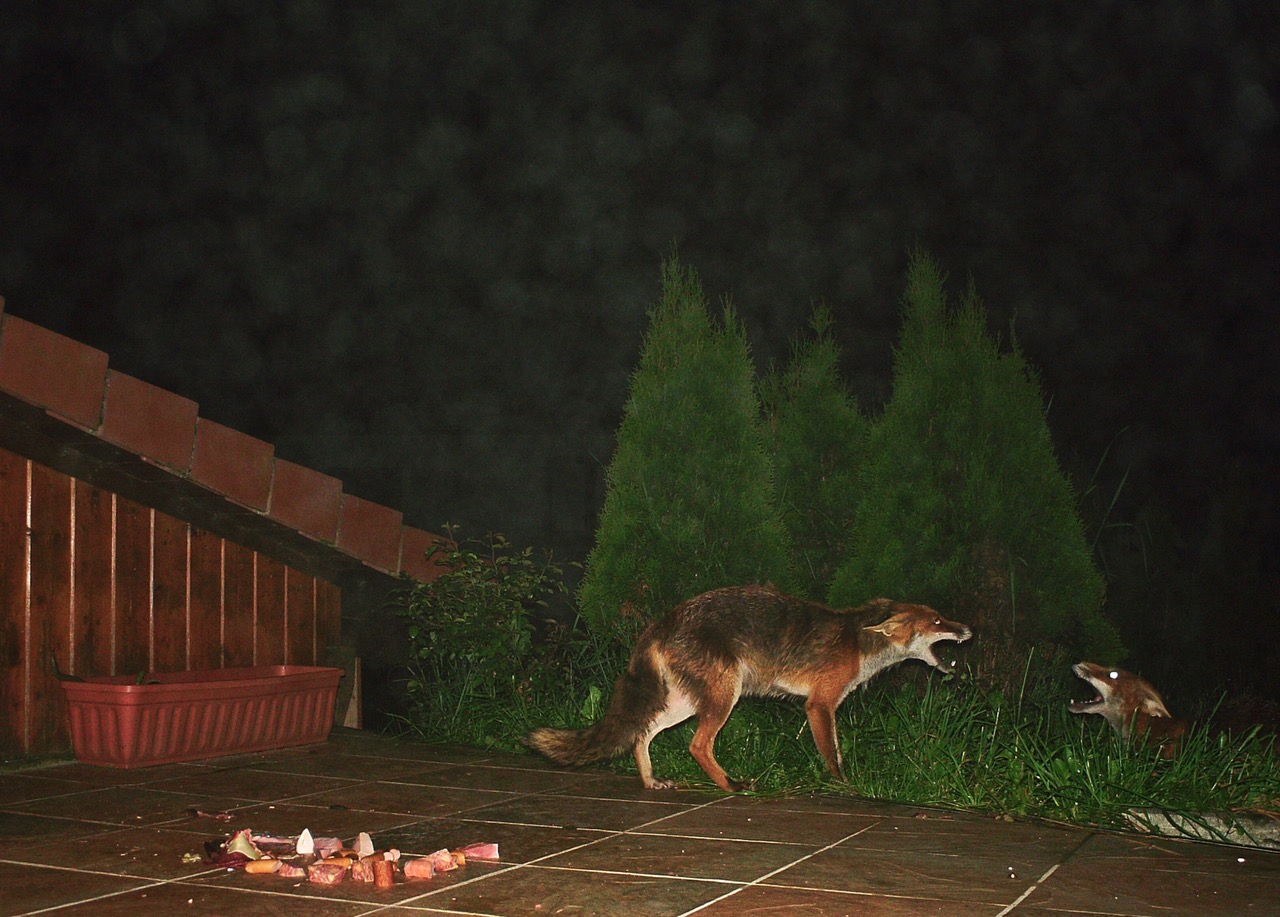 Fox vs fox
Fox vs fox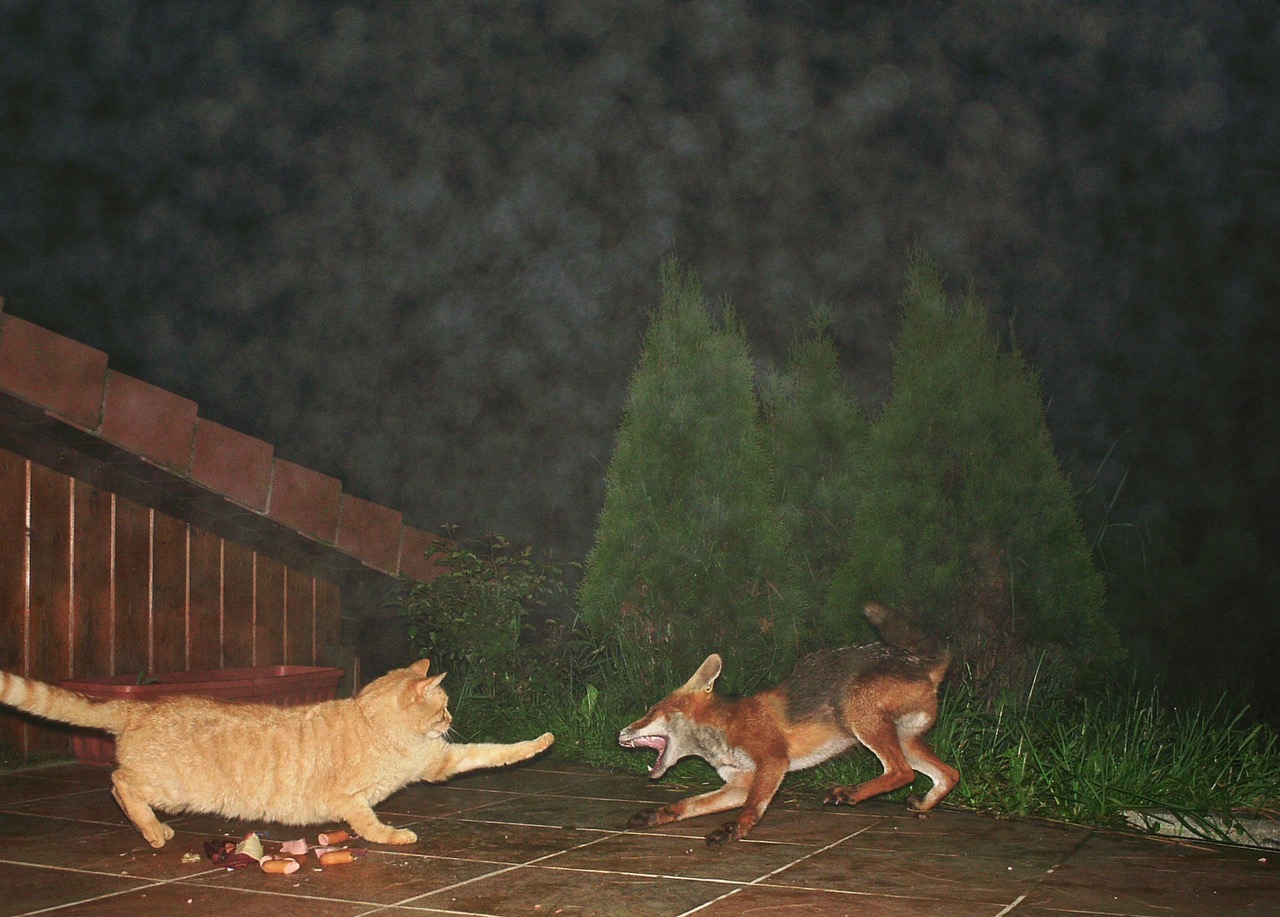 Cat vs fox
Cat vs fox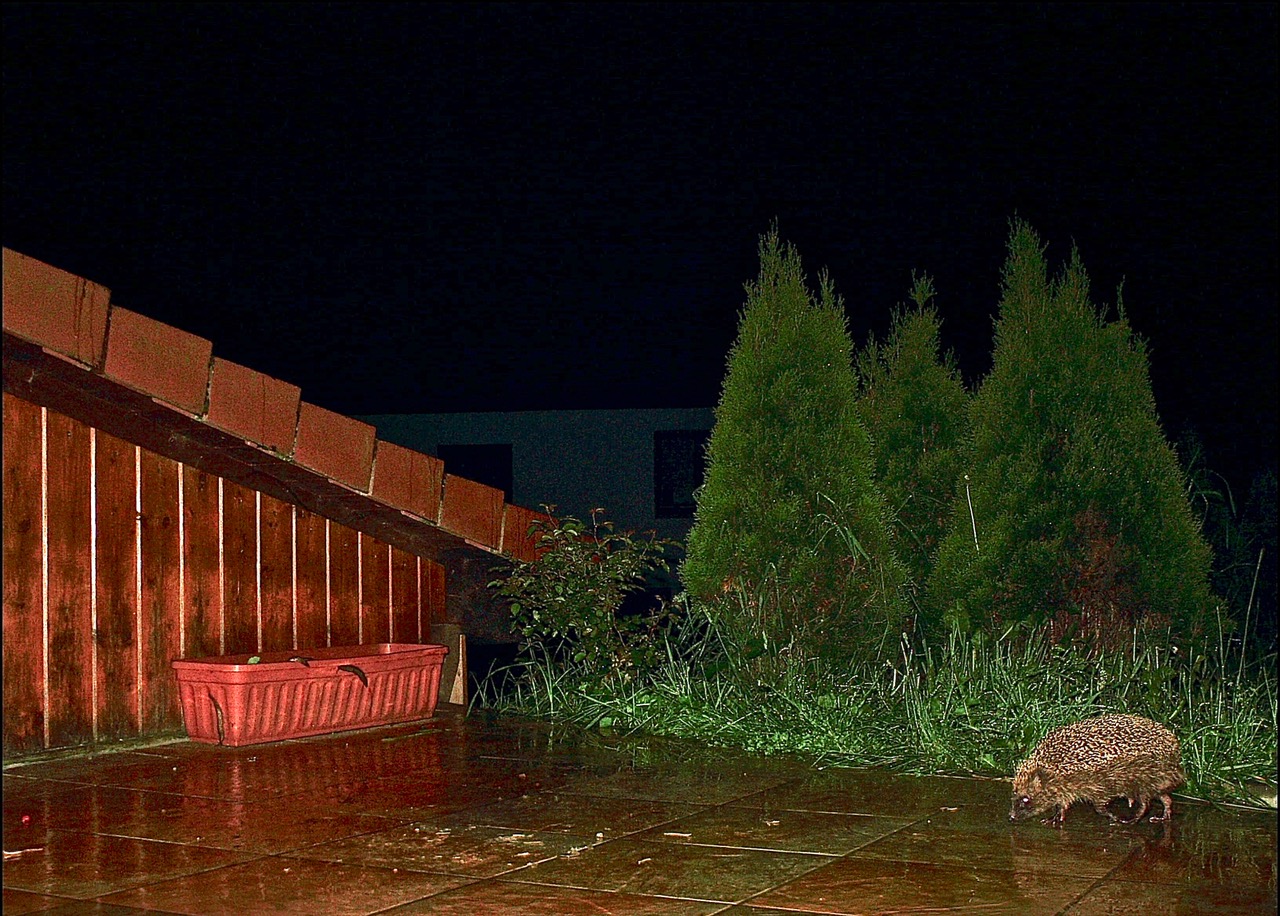 After the foxes, cats and martens have left the hedgehog makes his appearance...
After the foxes, cats and martens have left the hedgehog makes his appearance...Bio
Klaus Schindler hails from Germany’s Black Forest. He arrived in South Africa 1983 and lived in the Northern Transvaal, working with the department of forestry as the assistant district forest officer and co-ordinator for wildlife management. He spent most weekends in the Kruger National Park, which was just one hour from where he lived.
He then moved to Tulbagh where he owned a small wine estate and guest house.
The past ten years Klaus has lived in Hermanus and is a full-time tourist guide at Schindler’s Africa, offering tours to most areas of this stunning country but specializing in national parks and wine tours.
He also conducts tours to India’s famous Corbett Tiger National Park and he’s there on tours nearly every year.
Klaus has three favourite national parks in South Africa, namely Addo, Kruger and the Kgalagadi Transfrontier Park.
You can contact Klaus as follows:
Email: schindler@lando.co.za
Email: schindler@kapstadt.de
Tel:+27 (0) 832703449
Fax: +27 (0) 865121306
Return from Safari Camera Traps to Safari Photo Tips page
To make a safari rental booking in South Africa, Botswana or Namibia click here
"It's 768 pages of the most amazing information. It consists of, well, everything really. Photography info...area info...hidden roads..special places....what they have seen almost road by road. Where to stay just outside the Park...camp information. It takes quite a lot to impress me but I really feel that this book, which was 7 years in the making, is exceptional." - Janey Coetzee, founder of CAROK (Camps and Roads of Kruger) South Africa
"Having a passion for the region itself and having to know about all dynamics, water holes and ideal roads for a period of 6 years - I wish I had this guide on my first trip already!" - Morkel Erasmus, Secunda, South Africa
"Mario and Jenny take you to places that are not always visited, and their descriptions of the more remote camps will allow you to make an informed decision without wasting time and money" - Bob & Sherry Shepardson, DeBary, Florida, USA
"Your time and money are valuable and the information in this book will help you save both." - Don Stilton, Florida, USA
"I highly recommend the book to anyone visiting Etosha National Park to photograph the animals - or anyone considering an African photography safari in the future." - Anne Darling, Cognac, France
"As a photographer and someone who has visited and taken photographs in the Pilanesberg National Park, I can safely say that with the knowledge gained from this eBook, your experiences and photographs will be much more memorable." - Alastair Stewart, BC, Canada
"This work is so much more than an eBook, because it is also a guide, a tutorial, an inspiration and a must-have for anyone interested in wildlife photography" - Findtripinfo.com, USA
Photo Safaris on a Private Vehicle - just You, the guide & the animals!









New! Comments
Have your say about what you just read! Please leave us a comment in the box below.